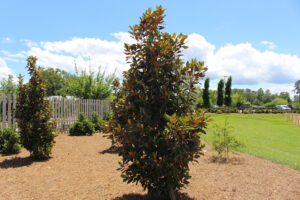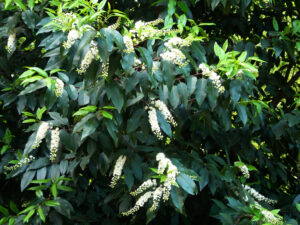The perfect small tree – does it exist?
By Dan Austin
As famously pondered by the ancient Greek philosopher Heraclitus, ‘the only constant in life is change’ and as every aspect of our lives, from how we spend our time to where we reside, is changing faster than ever before, so are our gardens.
The clear and present trend is toward shrinking properties and in turn shrinking gardens. Increasing population density and ongoing subdivision of land has seen the classic quarter acre block, with an ample front and rear yard, become increasingly rare. As a horticulturist, a small yard is a despairing thought, but they do appeal to an extensive market, particularly in the fast-paced world of today, where people are often time poor and don’t want to maintain large gardens. The shrinking garden has brought with it a challenge for horticulturists – how to fill the space with plants that will fit appropriately.
Plant breeders have been working at addressing this issue for many years, selecting and commercialising plant forms that are more and more compact. As a result, the shelves of our garden centres display an extensive variety of small shrubs, well-behaved ground covers and dwarf accent plants. However, there is one element in the garden that still poses a challenge for gardeners, the elusive small tree.
Now, you might be crying out that there are ample choices out there and to those ‘in the know’ you’d be right but for the average home gardener this doesn’t always seem the case. Speaking with various retail nurseries, there are a few criteria that pop up again and again, the most common being a request for an evergreen tree. There is an unfortunate misconception that deciduous trees are messier and more work than evergreens, which is not really the case. While deciduous trees dump a large amount of leaf litter in autumn over a few weeks and may require some clean up, most evergreen trees drop a small amount of leaf litter throughout the year, meaning cleaning up is an ongoing issue. Deciduous trees also provide summer shade, while letting in valuable sunlight in winter, and there are ample options for small yards from the ever-popular crepe myrtles (Lagerstroemia cultivars) to crab apples (Malus spp.) and ornamental pears (Pyrus spp.).
However, there are times when an evergreen is clearly a better option. They can double as screening and if its going to be the only tree in a yard, it isn’t unreasonable for someone to want a specimen to display foliage year-round. Small-space gardeners then often request a tree that will meet additional criteria. Something that stays below powerlines, has non-invasive roots and is hardy to a wide range of temperatures and soil types. Now the choices become a little more restricted.

Magnolia grandiflora cultivars including ‘Little Gem’, ‘Teddy bear’ and ‘Kay Parris’ are a favoured suggestion in this scenario and their popularity is obvious in their prevalence at just about every garden centre you visit but there are other magnolias to consider. The port wine magnolia (Magnolia figo) and Magnolia x ‘Inspiration’ are also good options. Another great option and less-utilised exotic species for this scenario would be to plant a Portuguese laurel (Prunus lusitanica), a hardy plant that can be tightly topiarised and maintained as small tree.
There is no reason you can’t have your cake and eat it too, or, in this case, have your tree and eat its fruit. Citrus trees are often overlooked as ornamental plantings, when many of them tick all the boxes in this scenario with the added benefits of fragrant flowers and edible fruit.
When selecting native trees there are also plenty of options. There are increasing options of dwarf Corymbia ficifolia cultivars, and even the mighty South Australian blue gum (Eucalyptus leucoxylon) has been downsized in the cultivar ‘Euky Dwarf’. Classic bottle brushes (Callistemon spp.) fit the bill and there is an ever-increasing range of colours and forms being developed (though some have problematic root systems to be cautious of). Our iconic wattles (Acacia spp.) are another option and for a modern feel, and Acacia cognata ‘Lime Magik’ is well worth exploring. There are various standard grevilleas that could be used in this scenario, created by grafting ground cover species onto Grevillea robusta trunks, resulting in small weeping trees.

Another native option, that has not been grafted or bred but is a naturally small and well-behaved evergreen tree providing a profusion of delicate and unusual flowers when in bloom, is Blueberry ash (Elaeocarpus reticulatus). Itis one of our less-utilised natural beauties and is well worth a look.
The list goes on and as gardens shrink, appropriate trees that fit are all the more important. They are a long-term investment and well worth some research prior to making a decision, rather than compromising with a spur of the moment purchase of whatever is on a shelf at the time.
Regardless of the species chosen, as a long-term investment, there is one piece of advice all small space gardeners should follow. Spend as much money on getting the most established tree your budget will allow. What we are really buying when we spend money on established trees is time, and a few hundred dollars for several years of growth is an absolute bargain.

